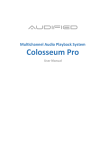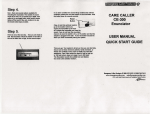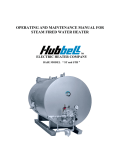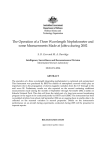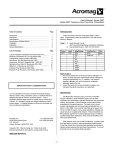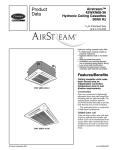Download LM9515 136kg - Evocare Australia
Transcript
Standard Wheelchair LM9515 with Elevating Leg Rests LM9515 136kg Thank you for purchasing this Standard Wheelchair. It is strongly recommended that you read through this user manual prior to using your Standard Wheelchair for the first time. Your Standard Wheelchair should provide years of trouble-free use, provided that you adhere to these recommendations. 2 Standard Wheelchair—Model LM9515 Padded and upholstered Swing back and flip up Aluminium desk armrest: Height Adjustable, 4 positions: 250-275-300-325mm Comfortable Nylon Upholstery Quick release axles for rear wheel 24" mag style wheel with PU tyre Dual axle hemiheight frame and three fork hole height adjustable Seat width 46cm (18") W x 40cm (16") D Anti tippers are standard Steel Wheelchair Chrome plated and Grey hammertone finish LM9515—Padded elevating leg rests with security stainless steel ratchet bar lock system Aluminium foot plates Wheelchair Net Weight 20kg. Note: Maximum user weight for this wheelchair is 136kg Evocare is a quality endorsed company and supplies equipment listed with the Therapeutic Goods Administration. The ARTG numbers for the LM9515 Standard Wheelchair is 218602. SPARE PARTS Evocare Code 9SK1U5051 9SK1U5052 9SK1W5051 9SK1W5052 9SK1L5051 9SK1L5052 9SK1X0051 9SK1A5053 9SK1H0005 9SK1L0003L 9SK1L0003L Description Spare Parts for (LM9515) Nylon upholstery seat width 18"W x 16" D Nylon upholstery back Front Castors (each) Bearings for front castors (each) Foot plates (each) Legrest adjustment pin (each) Stainless steel metal seat screw and plastic washer Armrest height adjustment knob (each) IV & OXY Holder Elevating leg rest pad ‐ L.H Elevating leg rest pad ‐ R.H. The comfort convoluted (egg shell) foam cushion -‐ LM97C450 is an opFon. Making LM9515 Wheelchairs Non-Folding In hospitals and nursing homes, theft of wheelchairs is often a common problem. Because most wheelchairs can be folded, they can easily be placed into the boot of a vehicle. These loses causes expense and inconvenience to institutions that rely on wheelchairs for the safe transport of people. Theft is less likely with a nonfolding wheelchair. Rivet positions for LM9515 Wheelchair Under Wheelchair View Procedure: .Ensure wheelchair is fully unfolded—At its full width. .Use 6 x 3/16” Stainless Steel Rivets. .Place rivets 20mm from each end of the bracket and in the middle of the bracket .Use 1/8” drill bit for initial holes then use 3/16” drill bit to finish hole to correct size. .A pneumatic rivet tool is best, although a hand lever type may be used—it will be difficult with a standard rivet tool, as rivets are large and stainless steel—NOTE: Only use stainless steel rivets. .One location on each side should be drilled and riveted before other holes are drilled so holes don’t become misaligned. Advantages: .Easier to propel and turn due to the frame rigidity—No energy lost in frame movement. .Greater strength and durability; parts moving less. .Less likely to be stolen as it is harder to transport. A Comfort Cushion (LM97C450) is recommended as there will be less give in the seat. 5 OPTIONAL IV Pole, Oxygen Bottle Holder Attachment A two-‐prong, chrome plated steel IV with telescoping stem which can be easily height adjusted, allowing use of medicaFon while on the move With aQached chrome plated steel oxygen boQle holder is designed to fit a “C” size cylinder. Perfect for people who need to bring their Oxygen cylinder with them. Product Code: 9SK1H0005 Attaches at handle Attaches at axle 6 Safety / Handling of Standard Wheelchairs Safety and handling of the Standard wheelchairs requires the close attention of the Standard wheelchair user as well as the assistant. This manual points out the most common procedures and techniques involved in the safe operation and maintenance of the Standard wheelchairs. It is important to practice and master these safe techniques until you are comfortable in manoeuvring around the frequently encountered architectural barriers. Use this information only as a basic guide. The techniques that are discussed on the following pages have been used successfully by many users. Individual Standard wheelchair users often develop skills to deal with daily living activities that may differ from those described in this manual. All warnings and cautions given in this manual MUST be followed. Techniques in this manual are a starting point for the new Standard wheelchair user and assistant with safety as the most important consideration for all. Stability and Balance To assure stability and proper operation of your Standard wheelchair, you must at all times maintain proper balance. Your Standard wheelchair has been designed to remain upright and stable during normal daily activities as long as you do not move beyond the centre of gravity. Virtually all activities which involve movement in the Standard wheelchair have an effect on the centre of gravity. Use the adjustable seatbelt for additional safety. DO NOT lean forward out of the Standard wheelchair any further than the length of the armrests. Make sure the castors are pointing in the forward position whenever you lean forward. This can be achieved by advancing the Standard wheelchair and then reversing a little in a straight line. 7 Operating Instructions To determine and establish your particular safety limits, practice bending, reaching and transferring activities in several combinations in the presence of a qualified health professional before attempting active use of the Standard wheelchair. ALWAYS check hand grips for looseness before using the Standard wheelchair. If loose and/or worn, replace immediately. If the Standard wheelchair is exposed to extreme temperature (above 38°C or below 0°C), high humidity and/or becomes wet, prior to use, ensure hand grips DO NOT twist on the Standard wheelchair handle—otherwise damage or injury may occur. DO NOT attempt to reach objects if you have to move forward in the seat as this may tip the wheelchair. DO NOT attempt to reach objects if you have to pick them up from the floor by reaching down between your knees as this may tip the wheelchair. DO NOT lean over the top of the back upholstery to reach objects behind you, as this may tip the wheelchair. DO NOT shift your weight or sitting position toward the direction you are reaching, as this may tip the wheelchair. DO NOT tilt the Standard wheelchair without assistance. DO NOT use an escalator to move a wheelchair between floors—serious injury may occur. NEVER leave an unoccupied Standard wheelchair on an incline. DO NOT attempt to stop a moving Standard wheelchair with the wheel locks. Wheel locks are not brakes. Before attempting to transfer in or out of the Standard wheelchair, every precaution should be taken to reduce the gap distance. Turn both castors parallel to the object you are transferring onto. When transferring to and from the Standard wheelchair, ALWAYS lock both hand brakes (locks) before transferring to and from the Standard wheelchair. DO NOT sit or transfer into the Standard wheelchair unless it is fully open. DO NOT operate on roads, streets or highways. DO NOT climb, go up or down ramps or traverse slopes greater than 9°. DO NOT attempt to move up or down an incline which has a film of water, ice or oil on it. DO NOT attempt to ride over kerbs or obstacles. Doing so may cause your Standard wheelchair to tip, causing bodily harm or damage to the wheelchair. DO NOT over tighten hardware attaching to the frame. This could cause damage to the frame tubing. 8 Quick Release Components The Standard wheelchair comes with a number of components which can be easily removed without tools for storage or transport. Armrests Remove the armrest by pushing in the button on the armrest tubing (1) whilst lifting the armrest up (2). Because the armrest are detachable , DO NOT lift the wheelchair by the armrests. Using the Stepper Tube Use the stepper tube to raise the front castors (when mounting a low kerb for example). To use, push down on the stepper tube with your foot. DO NOT raise the front castors by pushing down on the push handles as this could tip the wheelchair. To mount a low kerb. Approach the low kerb head on. Then the assistant uses the stepper tube to raise the front castors, and lowers the front castors on the raised kerb. Finally the assistant should push the wheelchair forward, lifting it up slightly to mount the kerb if required. To go down a low kerb. Line up the front castors with the edge of the low kerb. The assistant uses the stepper tube to raise the front castors and tip the users back slightly. Keeping the castors raised slowly move the wheelchair forward and slowly lower it down the low kerb. Warning: When going down a low kerb, the front castors must be raised to prevent the user from falling forward. The above are only recommendations and may not be suitable for all events. WARNING After any adjustments, and before use, make sure all attaching hardware is tightened securely. Otherwise, injury or damage may result. As with any vehicle, the wheels and tyres should be checked periodically for cracks and wear, and should be replaced when necessary. 9 1. Evocare provides consumers with the following warranty in relation to this Product, in addition to complying with the requirements of any relevant legislation, including the Competition and Consumer Act2010 (Cth) in Australia and the Consumer Guarantees Act 1993 in New Zealand (the Acts), except where a New Zealand consumer acquires the Product for the purposes of a business. 2. In this warranty, we have used the following definitions: (a) Form means a warranty claim form issued by Evocare in respect of Products; (b) Evocare or our means Evocare Australia Pty Limited, ABN 98 078 566 604 of Level 19, 144 Edward Street, Brisbane 4000; (c) Products means the goods manufactured for Evocare (including products manufactured by its contract manufacturers); (d) Material means a material or component used by Evocare in the manufacture of the Products; (e) Retailer means the authorised dealer of Products from whom the Product was purchased; (f) Warranty Period means the warranty period commencing from the date of purchase of the relevant Product. If the Product or part (as the case may be) is repaired or replaced, there will be no extension to the original warranty period; and (g) Workmanship means the handling, assembly and manufacturing processes performed by or on behalf of Evocare in order to manufacture the Products. 3. Evocare warrants that for the duration of the Warranty Period, all Products will be free of faults arising from defects in Workmanship or Materials, on the terms and conditions set out in this warranty. 4. Evocare undertakes that if during the Warranty Period any Product, or any part of a Product, has failed to operate correctly due to faulty Workmanship or defective Material, it will repair or replace the Product or part (as the case may be) free of charge provided that the following procedures are met : (a) The consumer must contact the Retailer or Evocare upon becoming aware of any defect to a Product upon which the consumer will be required to complete a Form and provide satisfactory proof of purchase. (b) Evocare will review the Form to determine whether there is a defect, and if so Evocare agrees to (at its option) repair, replace or supply equivalent goods, or pay the cost of any of those remedies to the consumer. (c) If Evocare requests the return of the applicable Product or part, the consumer will be responsible for the collection and freight costs of returning that Product or part to Evocare. (d) The consumer acknowledges that it is also responsible for the freight costs to deliver any new Product or replacement part to it. 5. This warranty is in addition to any non-excludable legal rights or remedies conferred on the consumer under any applicable Act and any similar laws. To the extent permitted by law, Evocare's liability for any non-excludable condition or warranty is limited to rectifying any defect at its option, as set out in paragraph 4(b). 6. Subject to the requirements of any applicable Act or legislation and to the extent permitted by law, no liability (whether expressed or implied) of any nature whatsoever, is accepted by Evocare for any consequential loss, damage or injury arising as a result of any fault in the Products. 7. This warranty does not extend to damage to Products which occurs during transit or transportation, or which is caused by any abuse, accident or improper installation, connection, use, adjustment or repair or use of goods otherwise than in accordance with instructions issued by Evocare. 8. The warranty on Products is waived if any addition or attachment to the Products do not have Evocare's approval or are not sold as Evocare products. The Products are designed to perform specific tasks under established test loads and unauthorised attachments may produce stresses for which the design is not appropriate. 9. The following applies to consumers who purchased a relevant Product in Australia: Our goods come with guarantees that cannot be excluded under the Australian Consumer Law. You are entitled to a replacement or refund for a major failure and compensation for any other reasonably foreseeable loss or damage. You are also entitled to have the goods repaired or replaced if the goods fail to be of acceptable quality and the failure does not amount to a major failure. 10 Your Evocare Standard Wheelchair is warranted to be free of defects in material and workmanship for 12 months, for the original consumer. This warranty does not cover device failure due to owner misuse, negligence, or normal wear and tear. The warranty does not extend to non-durable components such as rubber accessories, brakes and grips, which are subject to normal wear and tear. Non-durable components are warranted for 3 months. For more information about your LM9515 Standard wheelchair, warranty or to order parts call 07 3355 8007. E- mail: [email protected] Website www.evocare.com.au Manufactured for: Evocare Australia Pty Limited, 260 South Pine Road, Enoggera. QLD. 4051. Phone: 07 3355 8000 FAX: 07 3355 5043 11











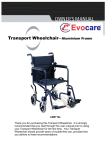
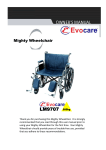
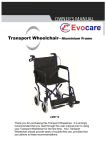
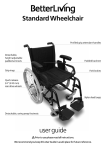
![BrilCloud User Manual [Final] 5-3-14.pages](http://vs1.manualzilla.com/store/data/005901816_1-e324554f00cd86f23cb66e80ebc5f4dd-150x150.png)
